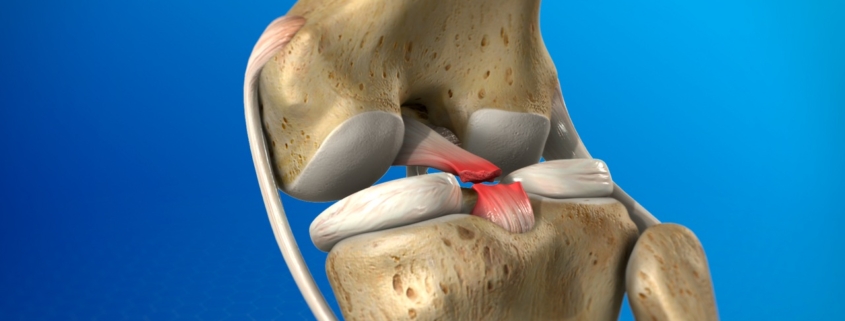Posterior Cruciate Ligament Injuries

Overview
The human knee is a complex joint made up of various ligaments, including the posterior cruciate ligament (PCL) which is critical for stabilizing the knee and protecting it from being pushed backward or displaced. An injury to this ligament, known as a PCL injury, can result in discomfort, instability, and limited mobility. Though comparatively less common than injuries to other knee ligaments, PCL injuries nonetheless affect a substantial number of people, particularly athletes in sports like football, skiing, and soccer where abrupt or forceful impacts to the knee are common.
Types
Doctors typically classify PCL injuries into three grades, based on the severity of the injury:
-
- Grade I: This is a partial tear of the PCL.
-
- Grade II: This is a complete but isolated tear of the PCL, meaning that no other ligaments are involved.
-
- Grade III: This is a complete tear of the PCL accompanied by damage to other ligaments in the knee.
Causes
PCL injuries typically occur when the knee experiences a forceful impact while in a bent position. Common scenarios include:
-
- A direct blow to the front of the bent knee, as might happen in a car accident when the knee strikes the dashboard.
-
- Falling onto a bent knee with your full weight.
-
- An abrupt twist or hyperextension of the knee.
Symptoms
Some common symptoms of a PCL injury include:
-
- Pain at the time of injury which may subside over time.
-
- Swelling that occurs quickly after the injury.
-
- A feeling of instability in the knee, such as it giving way during movement.
-
- Difficulty walking or bearing weight on the knee.
-
- Stiffness in the knee or reduced range of motion.
Diagnosis
Diagnosing a PCL injury typically involves the following steps:
-
- Physical examination: The doctor assesses the knee’s stability, motion range, and overall condition.
-
- Imaging tests: X-rays may be used to rule out bone fractures. Magnetic resonance imaging (MRI) can provide a detailed view of the ligaments and ascertain the severity of the injury.
Treatment Options
Treatment for PCL injuries aims at restoring knee function and preventing future injuries. Strategies include:
Non-surgical treatments:
-
- Physiotherapy: A physiotherapist can demonstrate strengthening and flexibility exercises that improve knee function.
-
- Braces: These can stabilize the knee and assist in healing.
-
- Ice and rest: These can reduce swelling and enhance recovery.
Surgical treatments:
In cases where non-surgical treatments are ineffective, surgery may be considered. This typically involves ligament reconstruction, where a graft is inserted to replace the damaged PCL.
Living With Posterior Cruciate Ligament Injuries
Living with a PCL injury requires managing symptoms and protecting the knee from further damage. This may be achieved through the following:
-
- Maintaining a regular regimen of recommended exercises.
-
- Avoiding movements that exacerbate pain or instability in the knee.
-
- Using aids like knee braces or crutches while the knee is healing.
-
- Taking over-the-counter pain relievers as advised by your doctor.
When to Seek Help
Immediate medical attention should be sought if you experience:
-
- An injury that produces intense pain, swelling, or inability to move the knee.
-
- Persistent pain or swelling in the knee that doesn’t improve with rest and home care.
-
- Any signs of infection after a knee injury, such as fever, redness, or warmth around the knee.
Please consult your healthcare provider for professional medical advice if you have or suspect you have a PCL injury.
